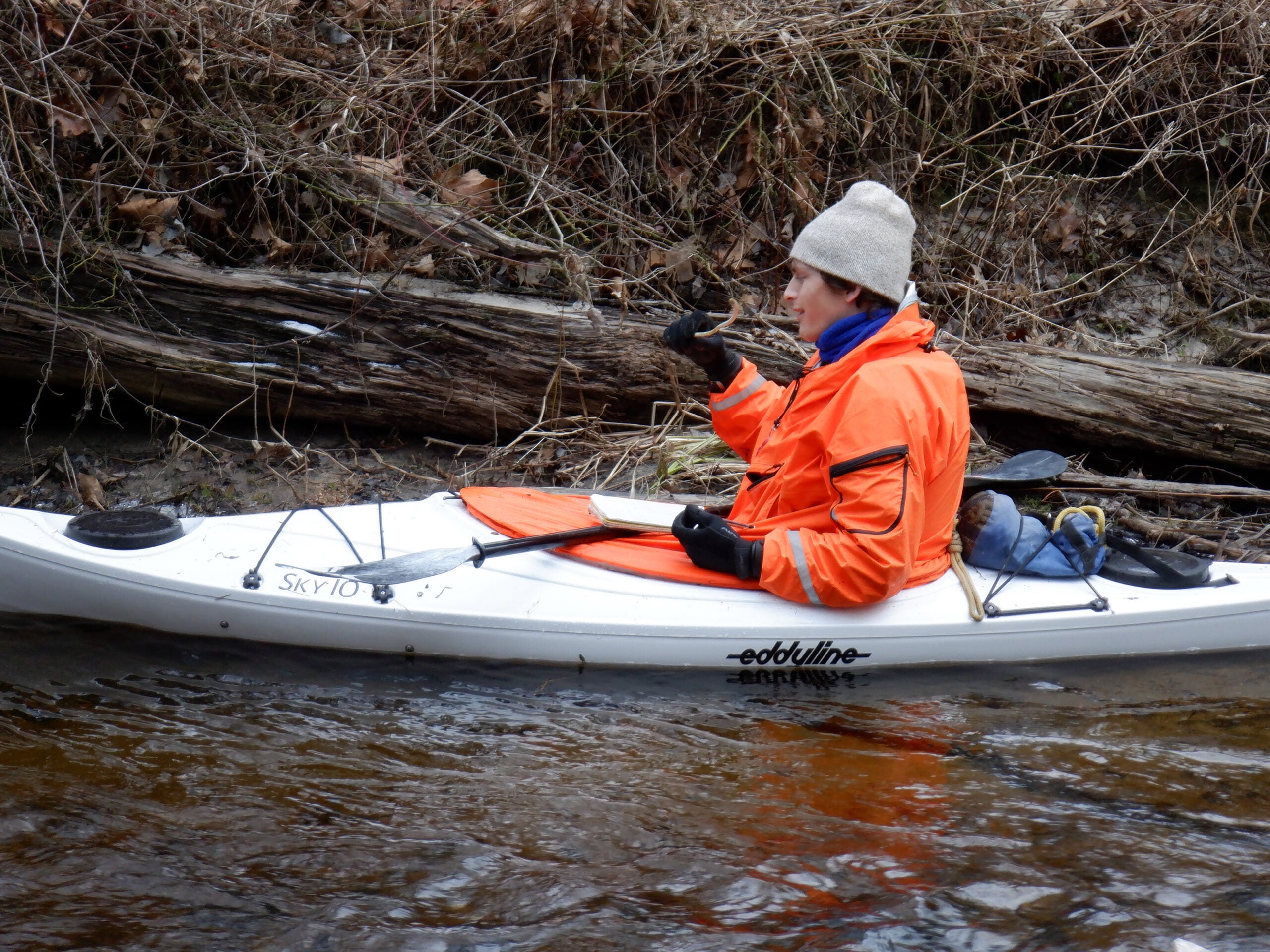KINGSTON, R.I. – January 26, 2021 – A University of Rhode Island graduate student will be scouring lakes, ponds and wetlands throughout Rhode Island over the next three years to search for signs of three semi-aquatic mammals to document their distribution in the state.
Traveling via kayak, John Crockett will search for evidence of muskrats, beavers and river otters in waterways of southwestern Rhode Island this winter before expanding his search to other areas of the state in the coming years.
“The main goal of the study is to get a good sense of the distribution of each species across the state,” said Crockett, a native of Fort Collins, Colorado, who is collaborating on the study with URI Assistant Professor Brian Gerber. “To do that, we’re conducting an occupancy analysis, which means we’re going out looking for signs of tracks, scat, chewed sticks, lodges and sightings of the animals.”
All three species have been the target of trappers in Rhode Island for many years – though the state legislature banned the trapping of river otters in the 1970s – and most of what state wildlife officials know about the animals is derived from trapping data. But since trapping has been decreasing in popularity in recent years, less and less data about the animals is being collected.
“We want to make sure we have a good assessment of where these mammals are found,” said Gerber. “It’s been 10 or 15 years since anyone has spent much time looking for them, and we want to see if we find any changes in their distribution since those earlier surveys.”
Muskrats are in decline across much of their range in the United States, according to Crockett, and now they are difficult to find. The decrease in trapping activity has made it difficult to tell whether the animals are in decline in Rhode Island or if the lack of trapping just makes it appear to be so.
Since river otters have not been trapped for 50 years, very little is known about their distribution and population in the state. “Ever since the ‘70s, we’ve been mostly in the dark about where they are and how many there might be,” Crocket said.
Beavers are believed to have recovered well after being extirpated from the area due to unregulated trapping and forest clearing in the 1800s. “Now they are creating conflicts with their dams causing flooding in some places,” Gerber said. “We’d like to be able to identify the habitat features where beavers are doing well and those areas where they are likely to cause conflict. To do that, we need distribution data.”
Crockett expects to conduct his surveys from December through March for the next three years, as well as periodic summer surveys. He eventually hopes to be able to estimate the probability that any of the three species will be found in a given habitat.
“Part of what we’re doing is trying to relate their distribution to changes in land use,” he said. “We have pretty good data on how these wetlands have shifted over time, so hopefully we can find some hint of an answer about why these animals’ populations are changing.”
The URI scientists are working closely on the project with wildlife biologists at the Rhode Island Department of Environmental Management so the data can be used to help prioritize habitat for protection and inform management decisions on trapping limits.
This is one of two research projects Gerber is leading that focus on learning more about Rhode Island’s mid-sized predators. The other is investigating the distribution and movement patterns of fishers in the state.

